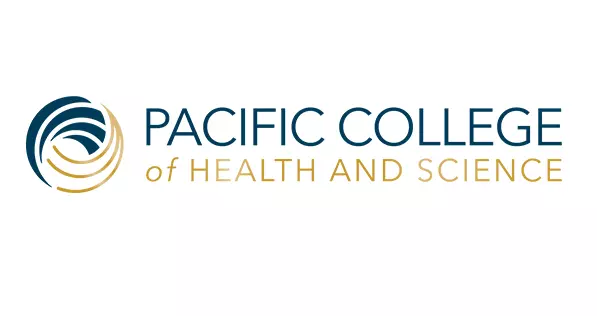By Susan West
Qigong is a wellness practice from China whose roots trace back to healing practices of ancient Asia [1], with many different branches and methods. While they have different emphases, all share three main elements: training the body, mind, and breath. Breath training exercises can include different ways of inhaling, exhaling, and holding the breath [1, 2].
Understanding Qi in Chinese Medicine
The underlying goal of qigong practice is to cultivate qi [1]. In traditional Chinese medicine (TCM), qi is considered a natural force that has a fundamental influence on all life, associated with our physiological and psychological functioning. Acupuncture, herbal medicine, physical therapies, and practices such as qigong provide ways to balance and harmonize qi, leading to improved health and well-being [1, 2].
Qi is associated with air and breath. However, based on its functions in the human body, qi is also considered to be a kind of matter that possesses a richer and more complicated message and energy than air. Qi travels throughout the body along a system of energy conduits called channels and collaterals [2]. These conduits are also referred to as meridians and the meridian system. Based on studies done on acupuncture, it has been proposed that nitric oxide (NO) may be a carrier of qi in the meridian system [3].
Are you interested in becoming a certified acupuncture professional?
Visit the links below to explore our specialized acupuncture programs at a campus near you:
Nitric Oxide
NO is a signaling molecule in our body [3, 4, 5]. It can be generated by three different isoforms of the enzyme nitric oxide synthase (NOS): neuronal (nNOS), inducible (iNOS), and endothelial (eNOS) [3, 4]. This allows NO to perform a wide variety of functions in tissues of our body [3, 4, 6]. It has a dual nature: low concentrations are beneficial, but high concentrations can be pathological [4, 7, 8, 9].
Some of the beneficial functions of NO include:
- helping regulate the cardiovascular system [4, 10],
- facilitating vasodilation [4, 6, 10],
- regulating the nervous system [4, 10, 11],
- influencing learning and memory [4, 7],
- contributing to immune response [4, 5, 7].
Excessive production of NO can contribute to inflammation and oxidative stress [4, 9], energy depletion [12], and neurodegenerative diseases [4, 7, 9].
Breath Holding/Intermittent Hypoxia
The effects of intermittent hypoxia (IH) on health have been studied for decades [13]. Some of the ways IH can be achieved is through breath holding, staying at high altitudes, and inhaling hypoxic gas mixtures via face masks or larger chambers [13, 14]. Typically, IH protocols combine episodes of low oxygen (hypoxia) with periods of normal oxygen levels (normoxia). These cycles are repeated at various intervals [13].
Studies have shown that the most important factors associated with a beneficial IH treatment are the level of hypoxia within a cycle and the number of times the cycle is repeated per day. Protocols coupling moderate hypoxia levels (9 – 16% inspired oxygen) with a low number of cycles/day (3 – 15 episodes/day) have the greatest therapeutic potential [9, 13]. Benefits can include enhancing the respiratory system [13], the cardiovascular system [13, 14], and the immune response, while reducing inflammation [13] and protecting against DNA damage [6].
Intermittent hypoxia training (IHT) also stimulates the release of NO [6, 9, 14]. Studies found that IH-induced elevated NO levels enhance respiratory functioning [15], facilitate quick vasodilation which is helpful in treating erectile dysfunction [6], and that they may contribute to improved bone tissue remodeling. It’s been suggested that increased endothelial NO production accounts for the antihypertensive effects of moderate IH [13].
Of interest is a study conducted on the role of IHT in experimental Alzheimer’s Disease in rats, which showed that IHT prevented cytotoxic overproduction of NO. It provided a protective buffer by sequestering excess free NO and binding it in S-Nitrosothiols and dinitrosyl iron complexes. These NO stores are then available during times of deficient NO production [9].
As stated earlier, qigong breath training can include the practice of breath holding, which is able to induce IH. To date, studies of qigong have focused on its dynamic forms, so I reviewed studies of yoga. Like qigong, yoga is a mind-body practice, has an ancient history, and elicits the relaxation response that helps counteract the effects of stress [16]. It also contains breath practices, referred to as pranayama. Studies of the pranayama practices of pranava (silent breathing while focusing on Om) [17] and bhramari pranayama/humming [5, 19] have been shown to increase NO.
Exploring the Benefits of Qigong Breath Holding
As in qigong, breath holding (sometimes referred to as kumbhaka) is an aspect of some forms of pranayama [6, 17, 18]. A study of nisshesha rechaka, holding breath in full expiration, found it to be capable of producing hypoxia. This method was especially effective when preceded by udgeeth pranayama (Om chanting) or bhastrika pranayama (bellows breathing) [6]. Novices were able to achieve hypoxia levels in the same range as those created using hypoxic gas mixtures which produced beneficial health outcomes [6, 13, 14].
At the 2003 Pacific Symposium, Alex Tiberi presented two lectures explaining some of the parallels between yoga and Chinese medicine [20, 21]. In “Yoga Postures & TCM for ZangFu Syndromes,” he led attendees through pranayama exercises and mentioned what types of exercises were able to raise yang or yin in the body [20]. Given the similarities between yoga and qigong, the benefits for qigong breathing exercises should be comparable to those found in the studies of yoga pranayamas.
Conclusion
Breath holding is a recognized method of intermittent hypoxia training. Nitric oxide and intermittent hypoxia appear to have a mutually supportive relationship which produces a range of preventative and therapeutic health benefits when practiced in moderation. Further research is needed to explore how this information ties into specific conditions and what protocols can be created to help people suffering from those conditions. With proper guidelines, qigong breath holding exercises could provide an accessible, affordable method for people to use to positively influence their well-being.
References
- Jahnke, R., Larkey, L., Rogers, C., Etnier, J. & Lin, F. (2010). A comprehensive review of health benefits of qigong and tai chi. American journal of health promotion, 24(6), e1–e25.
- Mingwu, Z. & Xingyuan, S. (1985). Chinese qigong therapy. (Entang, Y., & Xiuqing, Y., Trans.) Jinan, China: Shandong Science and Technology Press.
- Ralt D. (2005). Intercellular communication, NO and the biology of Chinese medicine. Cell communication and signaling: CCS, 3(1), 8.
- Forstermann, U. & Sessa, W. (2012). Nitric oxide synthases: regulation and function. European heart journal 33(7), 829-837.
- Taneja, M. (2016). Bhramari (shanmukhi mudra) pranayama in presbyacusis and dementia. Indian j otol, 22, 145-7.
- Malshe P. C. (2011). Nisshesha rechaka pranayama offers benefits through brief intermittent hypoxia. Ayu, 32(4), 451–457.
- Mattson M. P. (2008). Awareness of hormesis will enhance future research in basic and applied neuroscience. Critical reviews in toxicology, 38(7), 633–639.
- Gamper, N., & Ooi, L. (2015). Redox and nitric oxide-mediated regulation of sensory neuron ion channel function. Antioxidants & redox signaling, 22(6), 486–504.
- Manukhina, E. B., Downey, H. F., Shi, X., & Mallet, R. T. (2016). Intermittent hypoxia training protects cerebrovascular function in Alzheimer’s disease. Experimental biology and medicine (Maywood, N.J.), 241(12), 1351–1363.
- Dusek, J., Chang, B., Zaki, J., Lazar, S., Deykin, A., Stefano, G., Wohlhueter, A., Hibberd, P. & Benson, H. (2006). Association between oxygen consumption and nitric oxide production during the relaxation response. Medical science monitor, 12(1), CR1-10.
- Mancuso, C., Navarra, P. & Preziosi, P. (2010). Roles of nitric oxide, carbon monoxide, and hydrogen sulfide in the regulation of the hypothalamic-pituitary-adrenal axis. Journal of neurochemistry, 113(3), 563-575.
- Monro, J. A., & Puri, B. K. (2018). A Molecular Neurobiological Approach to Understanding the Aetiology of Chronic Fatigue Syndrome (Myalgic Encephalomyelitis or Systemic Exertion Intolerance Disease) with Treatment Implications. Molecular neurobiology, 55(9), 7377–7388.
- Navarrete-Opazo, A. & Mitchell, G. (2014). Therapeutic potential of intermittent hyposia: a matter of dose. Am j physiol regul integr comp physiol, 307, R1181-R1197.
- Serebrovskaya, T. V., & Xi, L. (2016). Intermittent hypoxia training as non-pharmacologic therapy for cardiovascular diseases: Practical analysis on methods and equipment. Experimental biology and medicine (Maywood, N.J.), 241(15), 1708–1723.
- Stefano, G. B., Esch, T., & Kream, R. M. (2019). Augmentation of Whole-Body Metabolic Status by Mind-Body Training: Synchronous Integration of Tissue- and Organ-Specific Mitochondrial Function. Medical science monitor basic research, 25, 8–14.
- Dusek, J. A., Otu, H. H., Wohlhueter, A. L., Bhasin, M., Zerbini, L. F., Joseph, M. G., … Libermann, T. A. (2008). Genomic counter-stress changes induced by the relaxation response. PloS one, 3(7), e2576.
- Nivethitha, L., Mooventhan, A., & Manjunath, N. K. (2016). Effects of various prāṇāyāma on cardiovascular and autonomic variables. Ancient science of life, 36(2), 72–77.
- Saoji, A. A., Raghavendra, B. R., Rajesh, S. K., & Manjunath, N. K. (2018). Immediate Effects of Yoga Breathing with Intermittent Breath Holding on Response Inhibition among Healthy Volunteers. International journal of yoga, 11(2), 99–104.
- Weitzberg, E. & Lundberg, J. (2002). Humming greatly increases nasal nitric oxide. Am j respir crit care med, 166(2), 144-145.
- Tiberi, Alex. “Yoga Postures & TCM for ZangFu Syndromes.” Pacific College Symposium, 6 November 2003, San Diego, CA.
- Tiberi, Alex. “Yoga and Chinese Medicine.” Pacific College Symposium, 6 November 2003, San Diego, CA.
Featured Posts:

